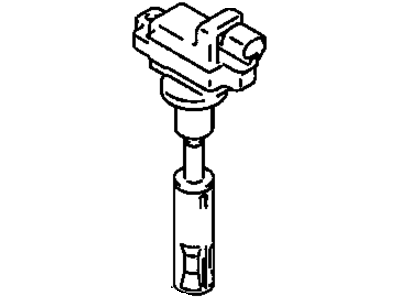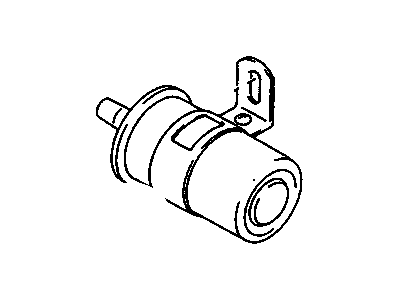My Garage
My Account
Cart
Genuine Chevrolet Tracker Ignition Coil
Ignition Coil Resistor- Select Vehicle by Model
- Select Vehicle by VIN
Select Vehicle by Model
orMake
Model
Year
Select Vehicle by VIN
For the most accurate results, select vehicle by your VIN (Vehicle Identification Number).
6 Ignition Coils found
Chevrolet Tracker Ignition Coil
Trackers are very important parts that are involved in the ignition system of a Chevrolet vehicle, one of them being the Chevrolet Tracker Ignition Coil. An ignition coil is an electronic device that boosts the voltage coming from the battery to a high voltage power suitable for producing spark to ignite the resultant air-fuel mixture in the cylinders. This process deals with two coils of insulated copper wire; the primary coil and secondary coil within an iron core in a housing. The primary circuit relates with the battery and the triggering system whereas the secondary circuit entails the high tension lead plus the spark plug cables. Chevrolet Tracker vehicles have incorporated a number of ignition coils in the past years and present, namely the distributor ignition systems, the coil packs and direct ignition systems comprising of COP and CNP. These different systems have different ways of getting voltage to the spark plugs: one cylinder/one coil; waste spark. An ignition coil that is not functioning as it should generates poor combustion and results in misfires, fuel inefficiency, and loss of power and thus should be checked and serviced regularly for the proper running of the vehicle.
Each OEM Chevrolet Tracker Ignition Coil we offer is competitively priced and comes with the assurance of the manufacturer's warranty for the part. Furthermore, we guarantee the speedy delivery of your orders right to your doorstep. Our hassle-free return policy is also in place for your peace of mind.
Chevrolet Tracker Ignition Coil Parts Questions & Experts Answers
- Q: How to inspect the ignition coil when the engine is cold on Chevrolet Tracker?A: To inspect the ignition coil when the engine is cold, begin by disconnecting the cable from the negative battery terminal. Look around the coil tower for carbon tracking, which appears as fine pencil-drawn lines, indicating an electrical shorting condition. If any carbon tracking is found, replace the coil and check the secondary wiring for excessive resistance. For 1986 through 1995 models, follow the primary wiring harness to the electrical connector and unplug it. If the connector is not easily accessible, detach the wires at the coil terminals. Disconnect the high-tension lead from the coil tower. Using an ohmmeter, measure the resistance across the primary terminals and compare it to the specified range in the Chapter's Specifications. Next, measure the secondary resistance by inserting a pointed metal tool into the coil tower, attaching one ohmmeter lead to it, and the other lead to the positive primary terminal. Compare the measurement to the coil secondary resistance in the Specifications, replacing the coil if it's out of range. For 1996 through 1998 models, unplug the electrical connector from the Distributor and measure the primary resistance by touching the ohmmeter leads to the upper two terminals on the distributor side of the connector. Compare the measurement to the specified range. To check the secondary resistance, remove the distributor cap and touch one ohmmeter lead to the upper terminal and the other to the high-tension tower. Compare the measurement to the coil secondary resistance in the Specifications, and if it's outside the range, replace the distributor. For 1999 and later models, there are no primary and secondary resistance specifications provided by the manufacturer. The prescribed method by the manufacturer is to substitute a known good coil for a suspected defective one, but this approach is not recommended since electrical components cannot be returned. If the ignition system is malfunctioning after checking other components, it's advisable to have the coils checked out by a dealer service department. For replacement, on 1986 through 1995 models, disconnect the negative Battery Cable and label and disconnect the primary wires from the coil. Remove the high-tension lead from the coil tower. Remove the coil bracket-to-firewall screws and detach the coil. To install the new coil, reverse the removal procedure. If the new coil doesn't come with a bracket, slide the old bracket off the coil and secure the new coil into the bracket. Mount the coil on the firewall, ensuring the condenser, if equipped, is placed under the upper mounting screw. For 1996 through 1998 models, replace the entire distributor since the ignition coil is an integral part of it and cannot be replaced separately. For 1999 and later models, unplug the electrical connector from the coil and remove the coil retaining bolt, then pull the coil straight up to remove it. Installation is the reverse of removal.












